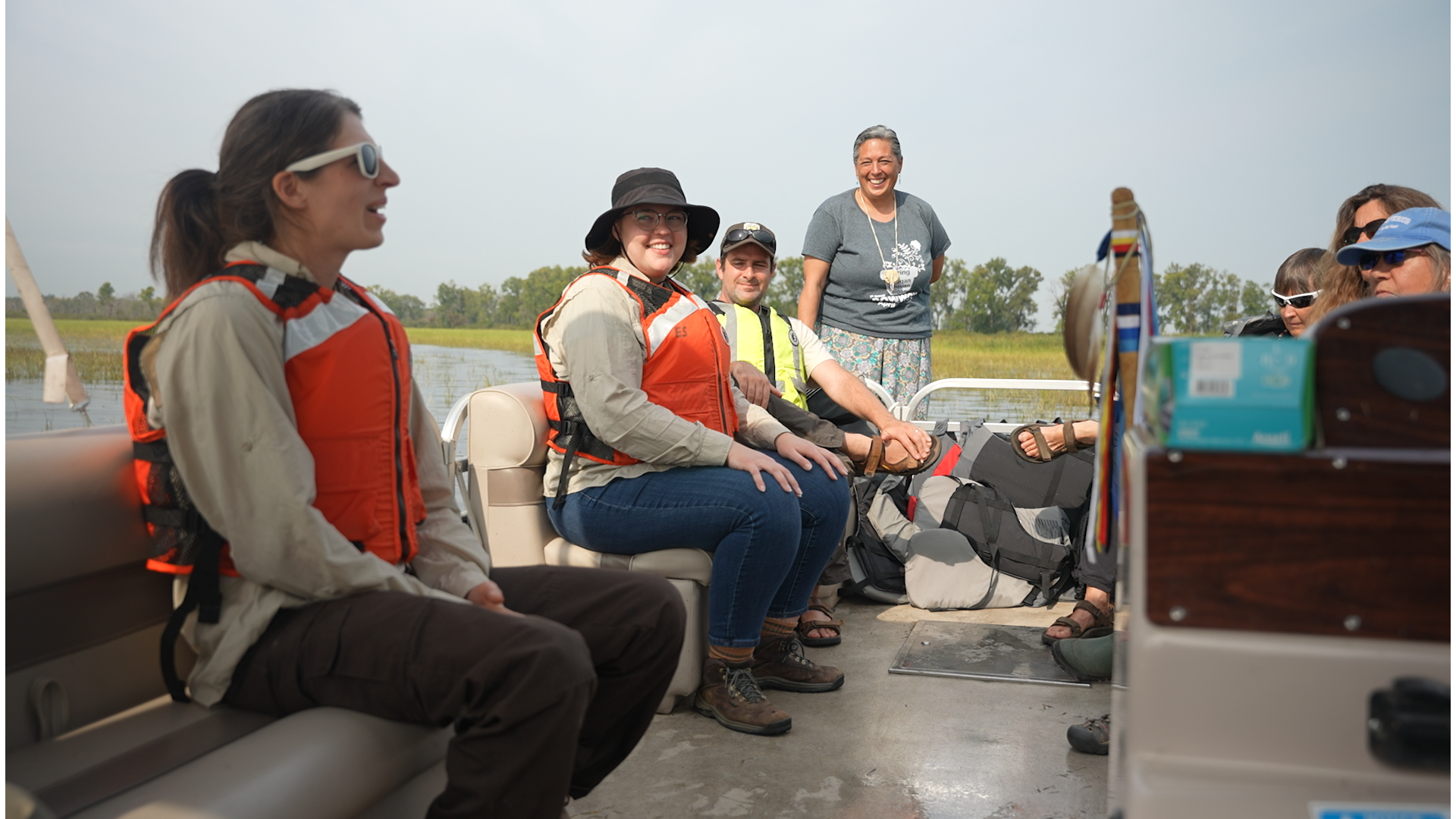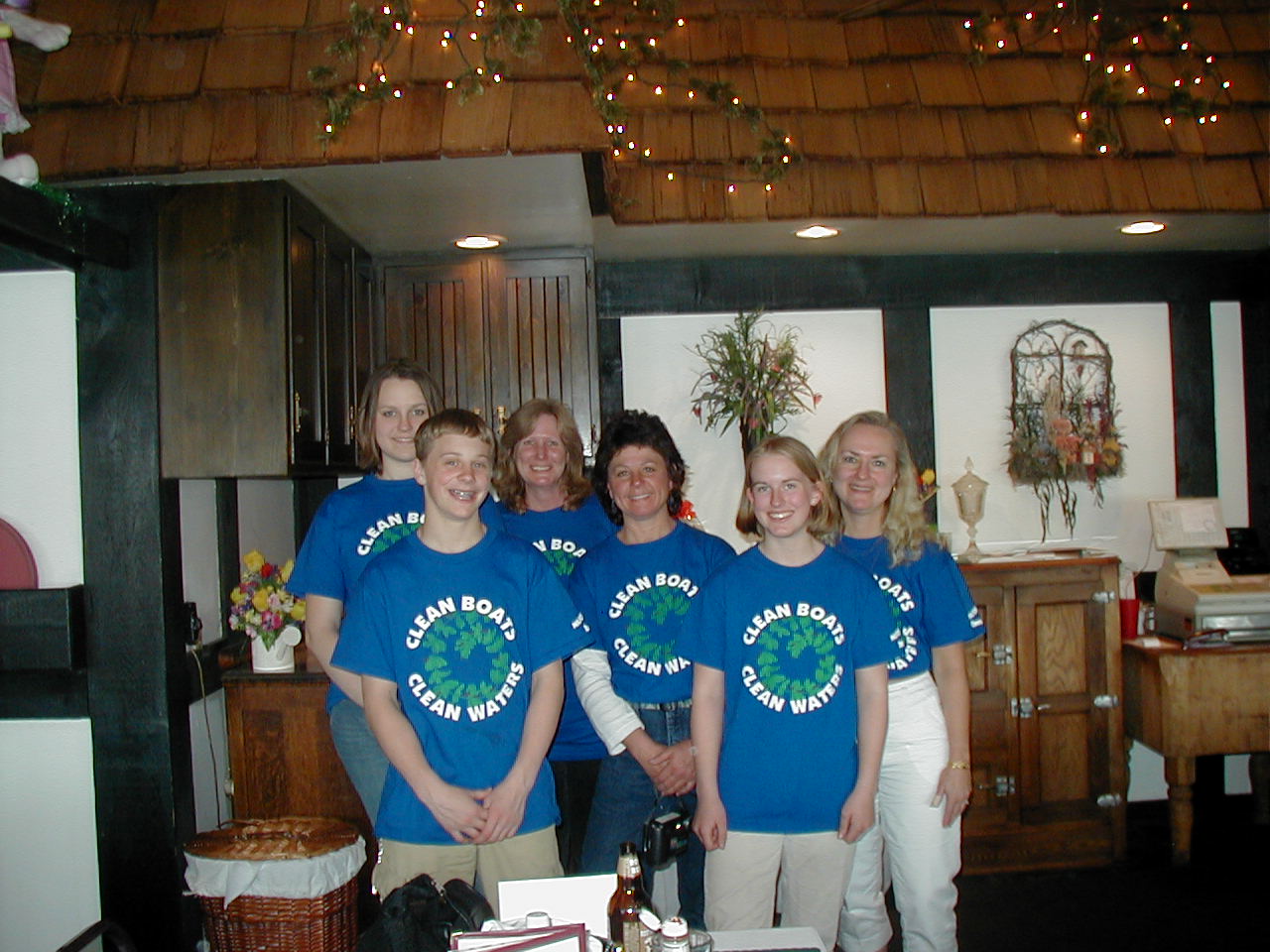Because it’s January, the lagoon in Milwaukee’s Veteran’s Park is rimmed with ice and buffeted by wintery winds off of Lake Michigan.
Ask Matt Smith or Todd Miller about the lagoon, though, and they might reply that they see it as a place of perpetual summer—families enjoying the sunny surrounding park, standup paddleboarders knifing the water’s surface and anglers dotting the shoreline.
That’s because the summer lagoon has become a sampling spot for these two researchers who are based at the University of Wisconsin-Milwaukee. They are constructing and testing an autonomous device that measures toxins from blue-green algae blooms, otherwise known as harmful algal blooms (HABs). HABs spring from cyanobacteria that is naturally present in Wisconsin waters but get active—and can be harmful to human and animal health—when conditions are right during the warm months.
In fact, conditions had been right multiple times in 2017. In two high-profile instances uncovered by Smith and Miller’s monitoring, major events were affected. In June, an international “extreme” water skiing competition sidelined athletes from 31 countries because the HABs produced a toxic compound known as microcystin, which is the toxin the team’s device will measure. The Milwaukee Dragon Boat Festival in August was moved to Lakeshore State Park because the lagoon’s water quality was dangerous to human health.
Public health officials exercised caution in these instances because microcystin poses a danger to the liver, brain and reproductive organs of humans, particularly children; pets; and wildlife. The blooms can also kill pets and wildlife, including fish living in the affected water. HABs are perhaps best known in the Great Lakes region as the reason behind the 2014 drinking water crisis in Toledo, Ohio, fueled by nutrient loading into Lake Erie. For three days, nearly half a million people struggled because unsafe water was flowing from their taps.
Current methods to keep Toledo residents—or water skiers, dragon boat captains or really anyone using the public water supply—safe, require technicians to collect water samples, return to a lab with the samples, do a chemical extraction from the sample and set about finding the toxins. Next comes toxin analysis through one of various methods, checking what kinds and how many of those kinds are present in the sample. The entire process is time-consuming, labor-intensive and costly.
Here’s where Professor Smith of the School of Freshwater Sciences, and Miller, professor in the Zilber School of Public Health, come in. They are co-investigators on a Sea Grant-funded project, “An In Situ Molecular Detection System for Microcystin Monitoring.”
“Our system pulls in a water sample. We filter it and get rid of the water because that’s not really what we’re interested in. Then, we extract the particular toxin that we are focusing on from the cells that we captured on the filter. By looking at the toxins contained inside the cells, we hope to create an early-warning system that can detect toxins before they are released into the water, thereby causing problems for drinking water,” Smith said. “We determine if we need to purify that sample further or whether some of the detection strategies we’re looking at can directly detect them.”
Smith hopes for a prototype device by end of the year. In the run-up to that accomplishment, successes have been notched in the areas of sample extraction and preparation.
Miller picked up on the theme. “One of the things that we thought was important was to begin with the extraction method. You are often dealing with a eutrophic lake. It’s dirty. There’s a lot of stuff out there and you can’t just, you know, come in and hand me a water sample and think I’m going to dump it into the machine. There’s actually a very lengthy chemical extraction process.”
He continued, “That is one of the most difficult things to do. How do you come up with a method for a device that is going to do this in an automated fashion; that’s not going to get clogged up? You have to deal with the variety of conditions, from really blue water all the way to really green and brown and yucky water.”
The machine to which Miller refers is a mass spectrometer, which provides a way to determine the chemical makeup of a sample by detecting its known mass or weight in electric and magnetic fields.
“If we want to build an autonomous sensor,” Miller said, “We really need to compare it to what we call the gold standard, mass spectrometry. That’s where I come in, in terms of validating the device, but also in the planning steps and saying, if we are going to automate basically what we would do in the lab in this device then I provide my expertise in what I think would be a good protocol the device would follow.”
That description nails another angle on this project, one of varied skills. “It’s a very challenging topic because you’ve got to mix so many different disciplines. You’ve got analytical chemistry, microbiology and molecular biology. You’ve got to marry these disciplines with topics from mechanical and electrical engineering. You’ve really got to understand, at least at a workable level, how to integrate all of those things,” Smith said. “My training was in molecular biology and microbiology so I have had to learn on the fly. We do try to push the limits of interdisciplinary.”
For his part, Miller said this outlook has drawn him to the project, “I saw that there’s a real need in the aquatic sciences to have both people who have good strong analytical skills and know the biology and people who develop new tools, detectors.”
Interdisciplinary science is one just facet of the project. As the UW-Milwaukee team has now formulated solid sampling and extraction protocols, they have also made the project multi-institutional because they recently connected with Chemistry Professor Maria DeRosa at Carleton University in Ottawa.
DeRosa has helped them overtop the detection-within-a-sample speed bump. She uses a method employing DNA aptamers. Aptamers can bind tightly and recognize other molecules, such as microcystin. Then, the microcystin concentrations can be quantified.
This collaboration draws a workable detection and early-warning system ever closer. It would join a few commercial systems on the market. At this point, Smith termed those current offerings as expensive and requiring high maintenance.
Miller and Smith are aiming for a different niche. “What we are trying to do is, No. 1, make a device that is open source and affordable,” Miller said. “No. 2, we want some universality to it. What I mean by that is that it’s not just a device that can detect this one toxin but that you could easily adapt to a new chemical, whether that be a marine toxin or whether that be, for example, an oil chemical or a fuel chemical you want to monitor in the Gulf of Mexico.”
The big picture, Miller reflected, is, “It is real nice when you do something that has immediate results, consequences and application to the taxpayer or the community.”
Families, anglers and recreational enthusiasts like paddle boarders, water skiers and dragon boat captains would agree.





